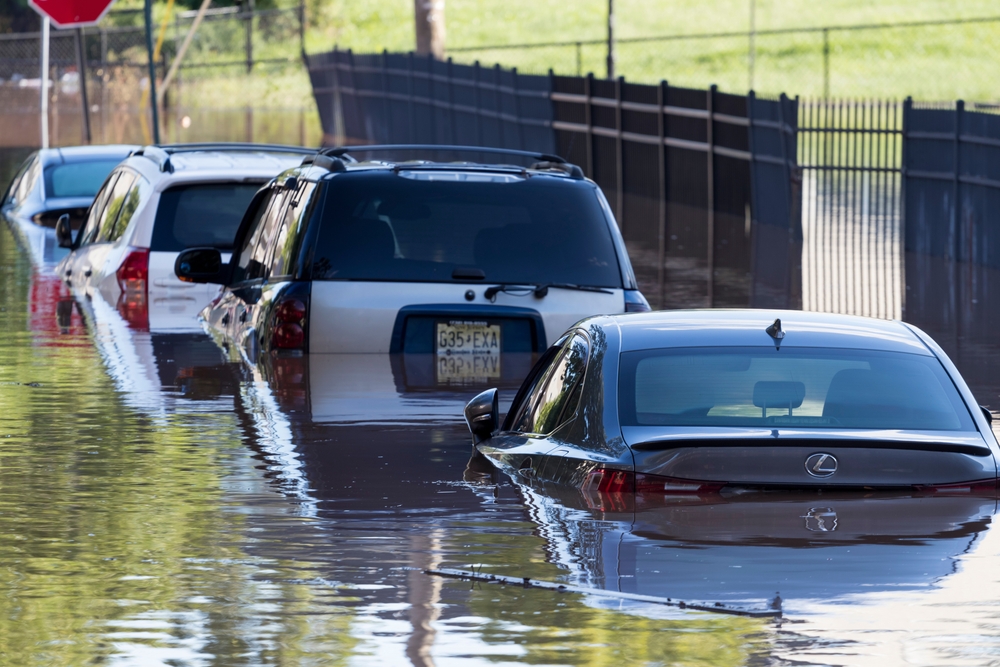Buy Flood Insurance: What we learned from Hurricane Ida

Hurricane Ida struck Louisiana as a category 4 hurricane with 150 mile an hour winds and days later hit New Jersey, New York, and other states with a massive amount of rain that has caused numerous flash floods, killing more than 40 people.
Unfortunately, many property owners are unaware that a standard homeowners insurance policy doesn’t cover floodwater damage. In order to be protected against flood damage, homeowners must have a separate flood insurance policy in place. Flood insurance is sold via the National Flood Insurance Program (NFIP) or via private insurance companies.
The Consumer Federation of America is currently estimating that the NFIP could see as many as 100,000 claims totaling over $7 billion in damages thanks to Ida. In recent New York Times article, David Maurstad, a senior executive of the federal flood insurance program, said roughly 17,000 claims had been submitted so far.
While many homeowners on the Louisiana coast carry flood insurance, due to the fact that hurricanes are common in this area, homeowners in New York and New Jersey are less likely to have flood insurance in place. In addition, most flood insurance policies exclude or offer limited coverage for damage to property in the basement of a home. Unfortunately, a lot of the damage in Northeastern states is due to flooded basements.
Call Now For Flood Insurance Quotes: 888-620-1954
NFIP policies will cover damage to major systems and appliances in the basement of a home but offers limited coverage for possessions such as electronics, computers and even furniture.
Despite the fact that most standard homeowner policies exclude property damage in basements, it is possible to purchase a rider that covers damage from sump pump failure, in most flooding situations, your sump pump will eventually fail. However, adding a rider is not a guarantee that your flood damage will be covered, every policy is different and while some may cover flood damage, others may only cover sump pump failure if the flooding is caused a burst pipe or other plumbing failure.
If your sump policy does cover flood damage, coverage can be limited. Most sump pump endorsements limit coverage to $5,000 to $10,000 which may help replace some of your possessions, but there is a good chance it will not be enough coverage to replace all of your items. In addition, sump pump endorsements come with a deductible that you must pay before coverage kicks in to cover the damage.
Tips for filing a claim for flood damage
Flood damage can be expensive and filing a claim can be complicated and take some time. Here are a few tips to help speed up the process and make sure your claim is handled fairly:
- Remote inspections: Many insurance companies are doing damage inspections over video due to the pandemic. This means you can meet with an adjuster over video which is both convenient and often speeds up the process.
- File a claim quickly: Insurance claims are often handled on a first come first served basis so file your claim as soon as possible. Once it is safe to go back into your home, contact your agent or insurance company to get the claims process started.
- Keep detailed notes: Whenever you interact with your insurer regarding your claim be sure to take notes. Keep your claim number handy and make notes of the name and title of anyone you speak with as well as an overview of your conversation.
- Document the damage: As soon as it is safe, document the damage to your home. Take videos and photos from a variety of angles. Photograph all your damaged or destroyed possessions before you throw them away. You may want to keep samples of damaged items such as carpet or curtains to show your adjuster.
- Keep receipts: Keep all receipts related to your claim, including restaurant and hotel bills if your home is not livable due to flood or other storm damage. You may be able to get reimbursed for these expenses under the additional living expenses section of your policy.
- Claim settlements are negotiable: Keep in mind that if you are not satisfied with your claim settlement you can dispute the amount and ask your insurer to review your claim. If you still disagree with the amount, you can file a written appeal with FEMA.
